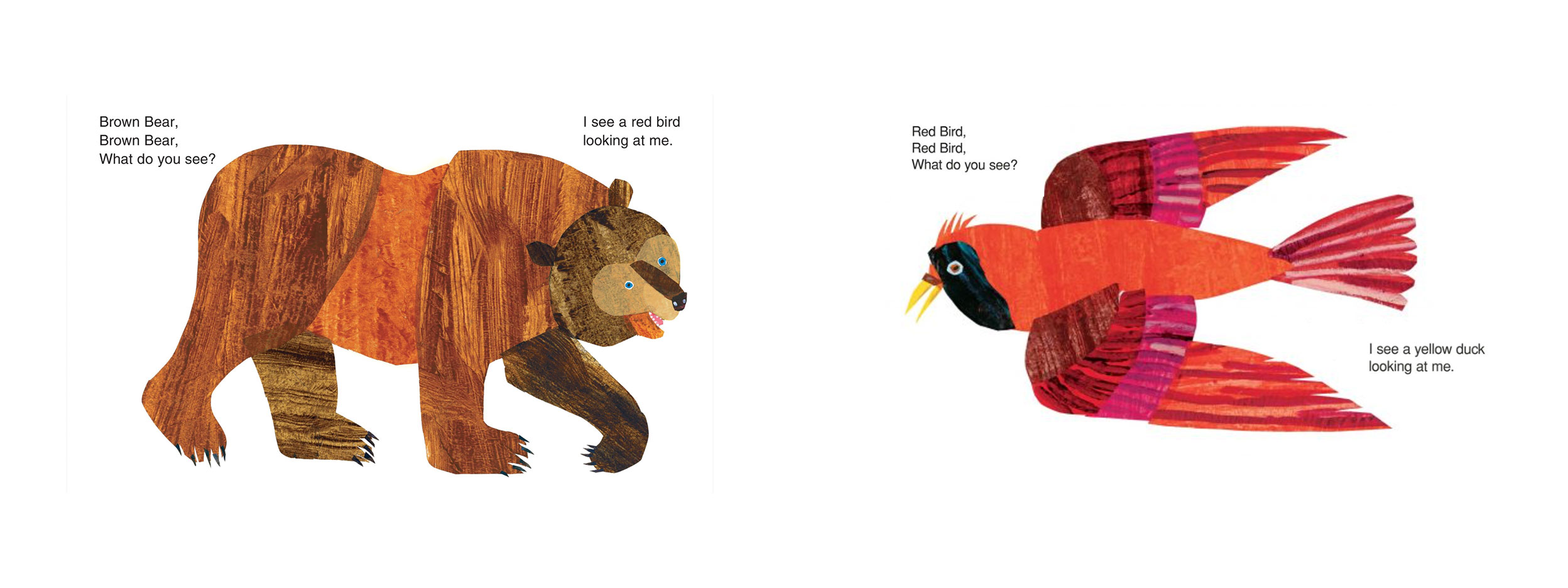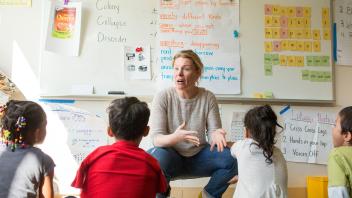To teach reading effectively, a teacher must carefully select texts for and with students. These are some of the questions you might have:
- What is readability?
- What kinds of texts support emerging reading skills and how do we use them?
- When do we introduce more complex text?
- What makes one text more complex than another?
Readability and text levels
There are many factors that influence readability. Readability means how easy or hard a text is to read and understand. Usually, readability is assigned a number or a letter to indicate a book’s relative ease/difficulty, measured along a continuum.
Schools and publishers use different ways to measure readability, such as guided reading levels, Lexiles, and grade level. Readability is based on factors like vocabulary, sentence length, and complexity. Systems such as Lexiles use complex algorithms to assign a level or range to a text.
Some leveling systems rely mostly on quantitative factors, such as syllable/word/sentence count and length. Others may rely more on qualitative factors, such as type of images and illustrations or interest. You can view a list of common readability levels used by U.S. schools here: Finding the Right Book Level: PALS Equivalencies
Determining the Readability of Your Classroom Texts
Although each readability formula is unique, here are some common factors you can consider as you think about your own texts:
- Word count and/or word length: Do the texts use short and simple words?
- Sentence length: Does the author write short and clear sentences that express one idea at a time vs. texts full of complex sentences?
- Text cohesion: How well do sentences and paragraphs in the text “stick together” through use of signal words, pronouns, conjunctions and other transition devices?
- Vocabulary: Does the text use words that are familiar, concrete, and related to children’s interests and experiences?
- Interest: Are the topics and stories ones that will capture children’s attention and curiosity?
- Illustration/Images: Does the text use images or illustrations to support the meaning?
- Themes/Maturity: Are the central ideas of themes of the text suitable or developmentally appropriate for the age/grade of the reader? Just because a first grader can read The Hunger Games, doesn’t mean they are ready to understand the themes of that dystopian novel yet.
Additional Considerations: Cultural and Linguistic Diversity
- Diverse cultures and aspects of identity represented, including race, gender, religion, and socioeconomic status
- Diverse settings and lived experiences represented
- The Diverse Bookshelf: Learn more about why diverse books matter for all kids and how to find high-quality fiction and nonfiction books that explore and celebrate our diverse and multicultural communities. You’ll also find guidance on assessing and diversifying your classroom library and how to use diverse books in the classroom — throughout the school year.
Basal Readers
Traditionally, the levels reported by publishers of basal readers are familiar ones to many parents and teachers. Anthology collections or basal readers read by children in grades 1-3 are designated by the following categories:
- Readiness: Pre-K or kindergarten
- Pre-primer A, B, C or Pre-primer 1, 2, 3: Kindergarten or early first grade
- Primer: early-to-mid first grade
- Grade level: first, second, third, etc.
For example, a school might expect a typical first grader to read instructionally (90% or higher) at the Primer level by December of their first grade year in order to be reading at grade level by the end of first grade.
How are reading levels used?
Reading levels tell us about a book’s readability, or the likelihood that a child can read and understand a text. Reading levels can help teachers gauge if a student can read texts that are expected at that grade level and to choose books that align with a students’ age/grade, skills, and interests.
Many schools use charts to guide teachers toward the expected band of reading ranges for each grade like the one below (Shanahan, 2020).
| Text Complexity Grade Band in the Standards | Old Lexile Ranges | Lexile Ranges Aligned to CCR Expectations |
|---|---|---|
| K-1 | N/A | N/A |
| 2-3 | 450-725 | 450-790 |
| 4-5 | 645-845 | 770-980 |
| 6-8 | 860-1010 | 955-1155 |
| 9-10 | 960-1115 | 1080-1305 |
| 11-CCR | 1070-1220 | 1215-1355 |
These bands represent what a child is expected to read and understand at each grade level.
However, reading levels can be misused and limiting. There is not widespread agreement on a specific “level” for every text. You may find the same title assigned to different levels based on the leveling system used.
Within your own school, you may find that some texts assigned to the same level are more challenging than expected for students! There is no surefire way to predict how a child will respond to a text. No single level can capture the complexity and diversity of texts, nor the interest and motivation of readers. A child fascinated by a topic might be motivated to read a book that is far above their “level.”
Types of texts
Besides readability, teachers must also consider what type of text to use. For emergent and beginning readers — before second grade — a careful selection of texts can support the goals of reading instruction.
Some common types of books for young readers are described below.
Patterned or Predictable Texts
Patterned or predictable texts use repeated words, phrases or rhyme throughout the text. Patterned/predictable texts support students who have limited or no alphabet and have not developed any decoding skills. These texts encourage memorization and readers depend upon repetition, context, and pictures to guess at words. Students do not learn word identification with these types of books. Once a child has learned some concepts of print and speech-to-print match, you can move on to other types of texts.
If you have lots of predictable texts in your classroom and are transitioning away from using them, this blog posts offers creative ideas for reusing the texts: What Can I Do With All These Predictable Books?
Example: Brown Bear, Brown Bear, What Do You See? by Bill Martin and Eric Carle is one example of this type of text.

Decodable Texts
Decodable texts are introduced as soon as students learn some letter-sound correspondences — in particular, as short vowel instruction begins. Decodable books allow students to apply newly taught phonics features in their reading. For example, cat, hop, and fish are decodable words. In decodable texts, a high percentage of words can be identified by using letter-sound knowledge and phonemic awareness skills. Decodable texts support learning how to read print, giving kids a chance to practice their decoding skills with connected text.
Example: Mat, from the Bob Books (Set 1) is a typical example of a decodable text.

Controlled Vocabulary Texts
Controlled vocabulary readers limit texts to a handful of words that are used repeatedly. New words are added gradually, and learned primarily through memorization. Controlled vocabulary texts support the development of a sight word vocabulary.
Example: Some of the Dr. Seuss books or Go Dog Go! by P.D. Eastman are good examples of controlled readers.

Decodable Text, Leveled Text, and All the Rest
Listen to the podcast from Reading Horizons to hear a description of the different types of texts used for early reading instruction.
Instructional reading level and text complexity
A common practice is to choose texts for teaching reading based on a child’s assessed instructional reading level. The idea behind instructional reading level texts is to match books to a child’s reading skills while also providing some challenge for growth. Typically, these are books a student reads at 90-95% or better accuracy and reasonable reading rates based on age/grade norms.
The Importance of Using Grade-Level Texts
The research base to support using only instructional level texts is slim. There is little evidence to suggest that assigning kids to their instructional reading level will promote their reading growth. In fact, for older struggling readers, evidence suggests just the opposite! Exposing older struggling readers to a sole diet of texts written below grade level puts them at an even greater disadvantage, since they get even fewer opportunities to learn grade-level content — the language engine that drives comprehension!
Recent studies (Brown, Mohr, Wilcox, and Barrett, 2018) using grade-level text suggest that using complex text with scaffolding can support the reading growth of older struggling readers.
Should we only use more complex grade-level texts?
There’s not a one-size-fits-all answer to this question. The answer is “it depends on the student.”
For students who read at or below a 2nd grade level, using carefully selected instructional reading level (IRL) texts may be beneficial. Students at these levels benefit from reading texts with a high percentage of decodable and high-frequency words that are repeated often and allow them to apply taught phonics skills (Compton et al, 2004; Hiebert, 2002).
For older struggling readers, recent studies suggest that using complex texts (up to two years beyond their assessed IRL) during partner reading can extend and support reading growth (Brown et al, 2018).
Pairing, Scaffolding, and Assessments
Note that in these studies, weaker readers were paired with stronger ones. Don’t pair your weakest readers together and then give them a challenging text! Keep in mind, when using more complex texts, be sure to offer sufficient scaffolds. None of the studies that used complex texts with weaker readers have done it successfully without offering extensive supports.
Finally, be aware of how IRL is calculated in the assessments your school uses. Some reading tests yield IRL based on oral reading accuracy and comprehension tasks, where others may consider accuracy on timed graded word lists and passage reading rates. Different assessments may yield conflicting estimates of IRL. Older students typically have a broad IRL range rather than a single fixed level.
I've chosen a complex text — what scaffolds can I use?
Look at the list below for some ideas on ways to scaffold student’s understanding of complex texts. Keep in mind that the list is not intended to be exhaustive, and most of these scaffolds will work for any text you choose!
| When to Use | Effective Supports |
|---|---|
| Before Reading |
|
| During Reading |
|
| After Reading |
|
Text selection is a complex and nuanced process. Understanding a text’s readability and type means that we can better assess potential challenges a young reader might face. Armed with knowledge about our students’ assessed reading skills — plus our intended purpose and providing supports for a reading — allow us to choose texts wisely for instruction.
Learn more about types of texts
Right to Read
What Can I Do With All These Predictable Books?
Right to Read
Predictable Books: Purpose-Written for Guessing
Shanahan on Literacy
Which Texts for Teaching Reading: Decodable, Predictable, or Controlled Vocabulary?
Shanahan on Literacy
Complex Text for Beginning Readers … Good Idea or Not?
Shanahan on Literacy
Which Text Levels Should We Teach With?
Shanahan on Literacy
Instructional Level and Teaching with Complex Text
Shanahan on Literacy
Eight Ways to Help Kids to Read Complex Text
Shanahan on Literacy
Won’t Student Motivation Be Damaged If We Teach with Complex Text?
Shanahan on Literacy







